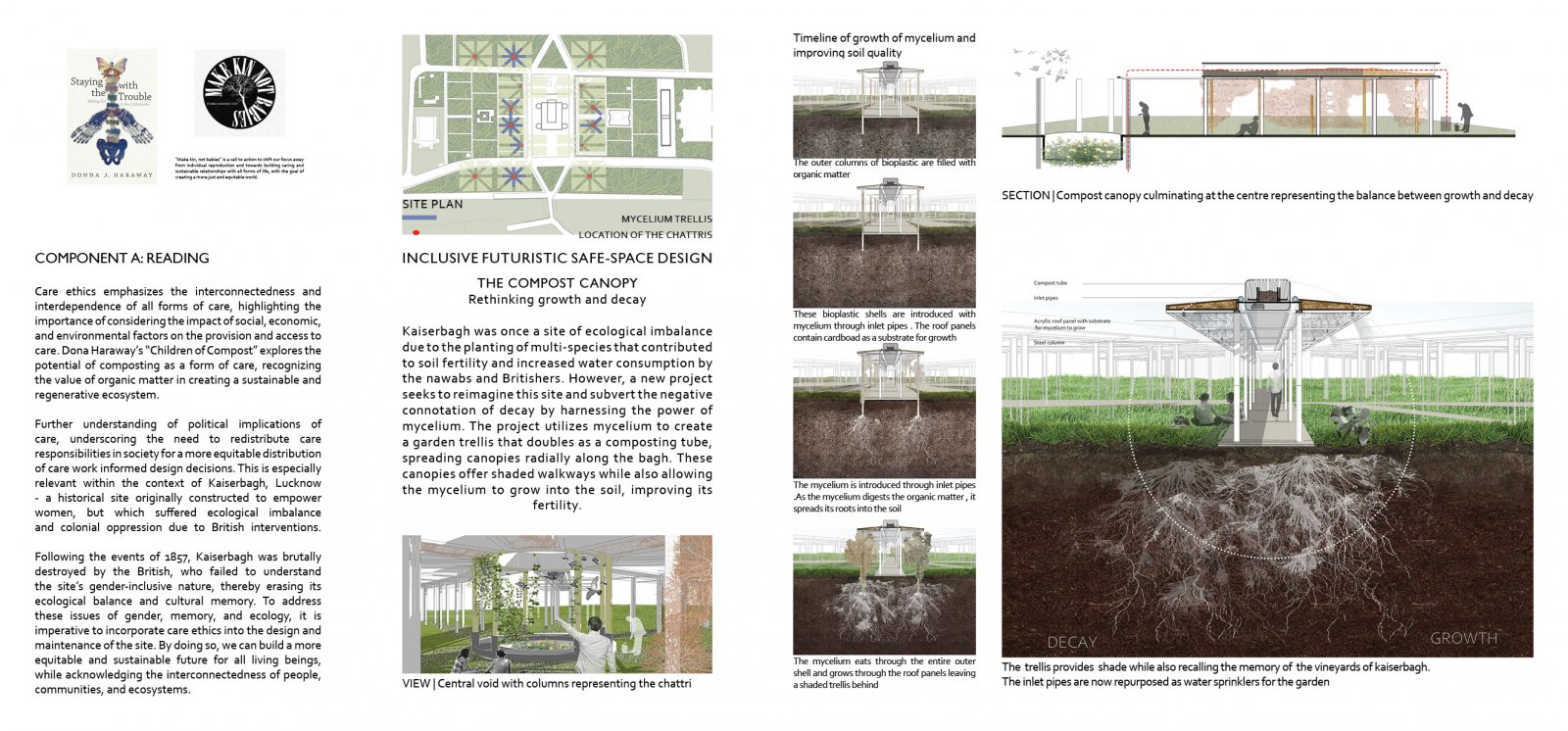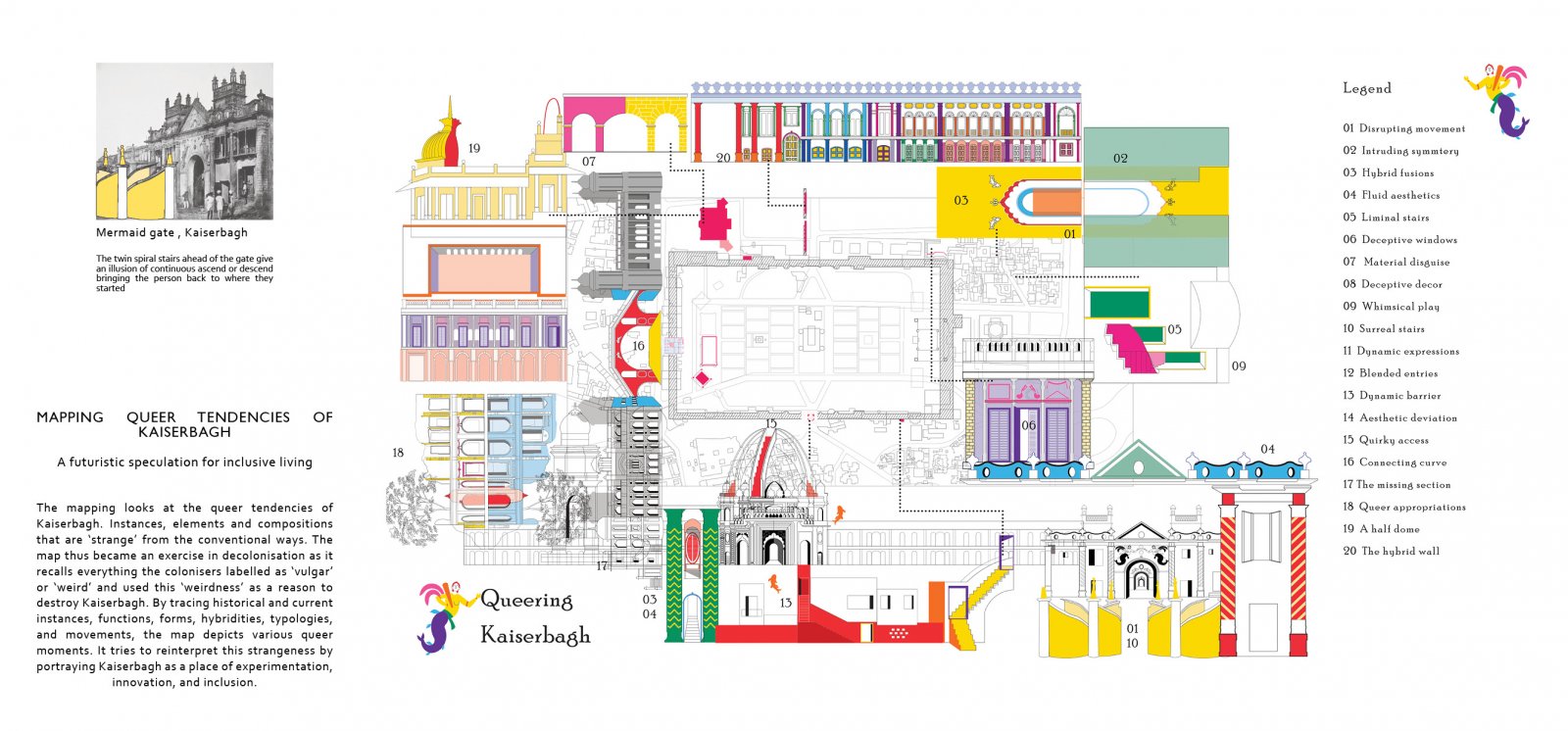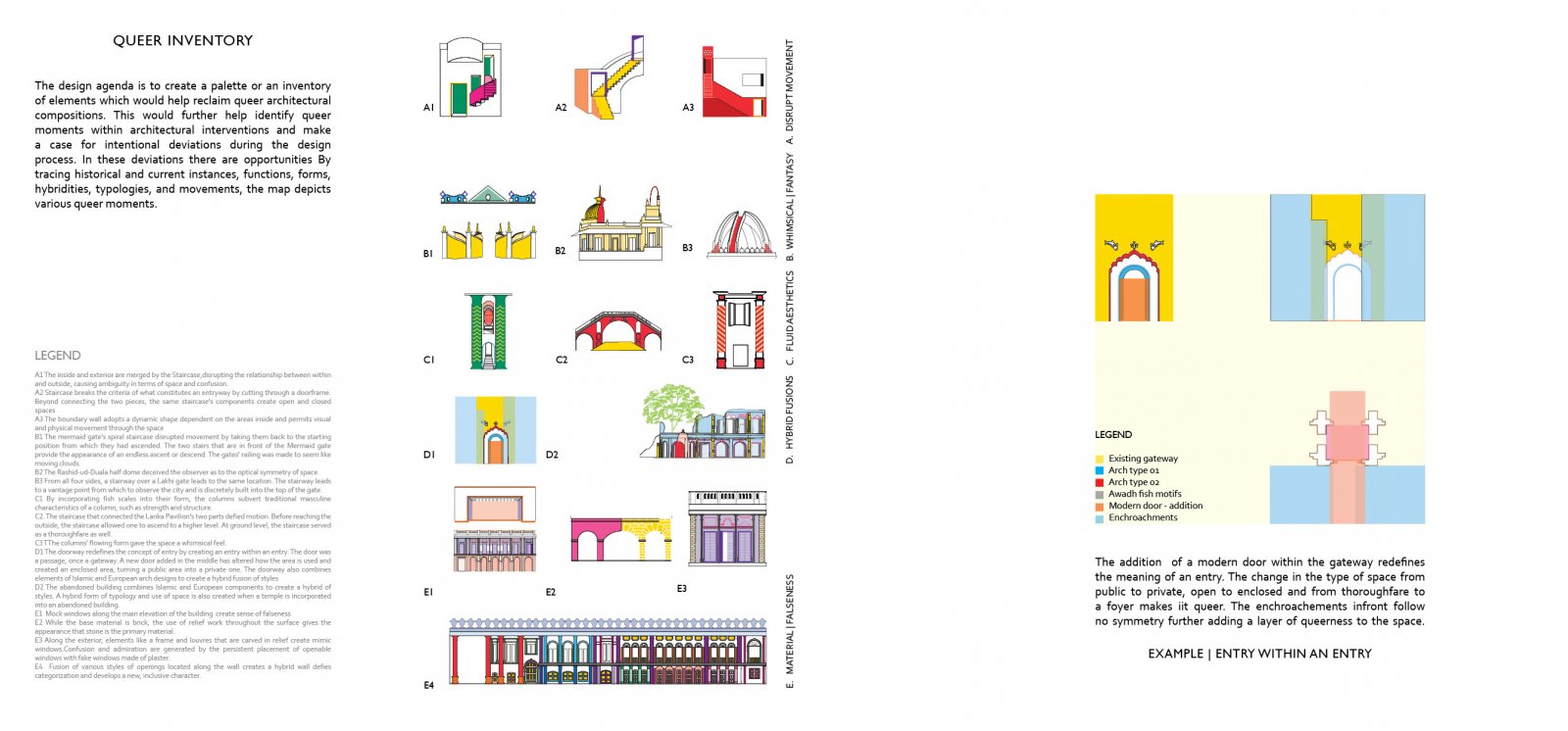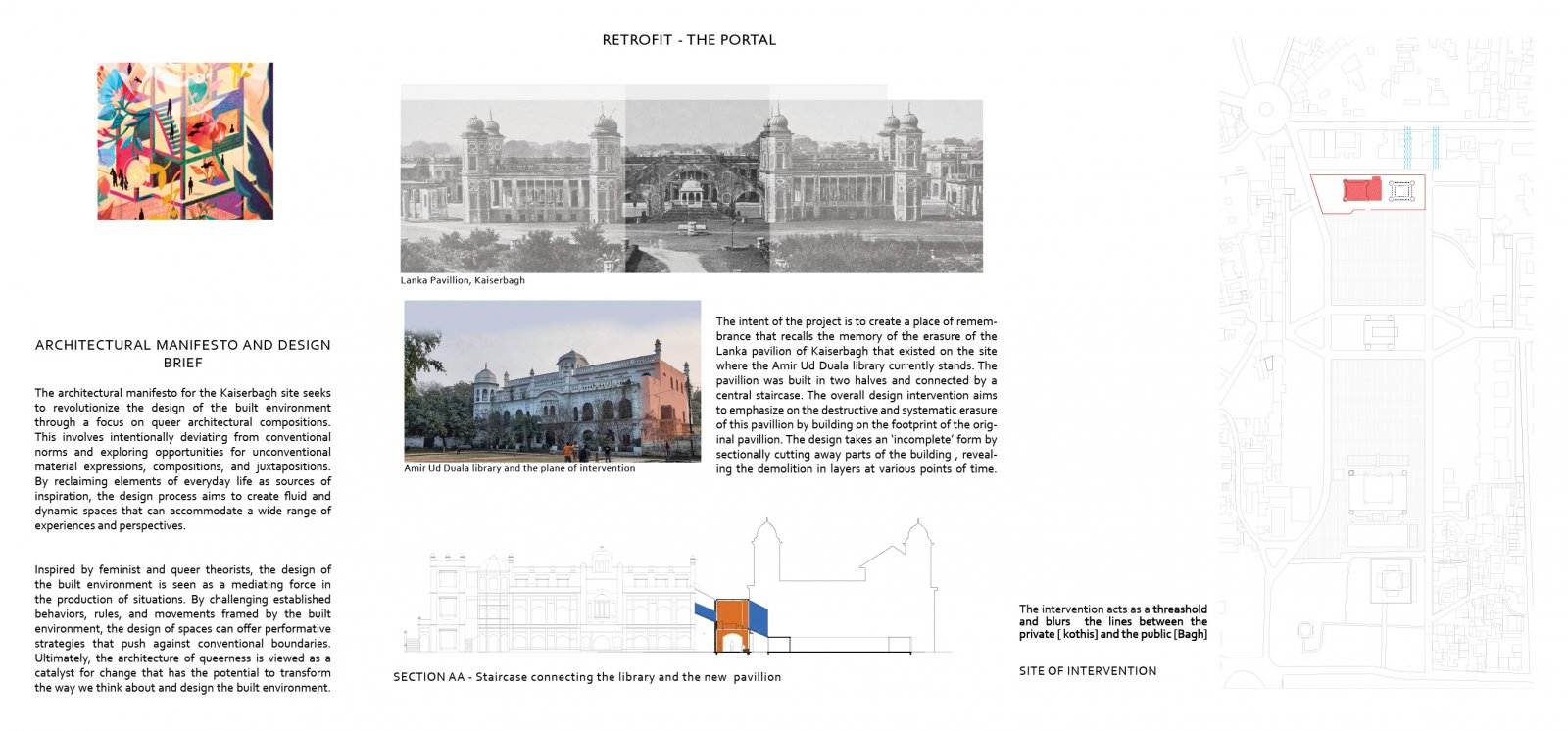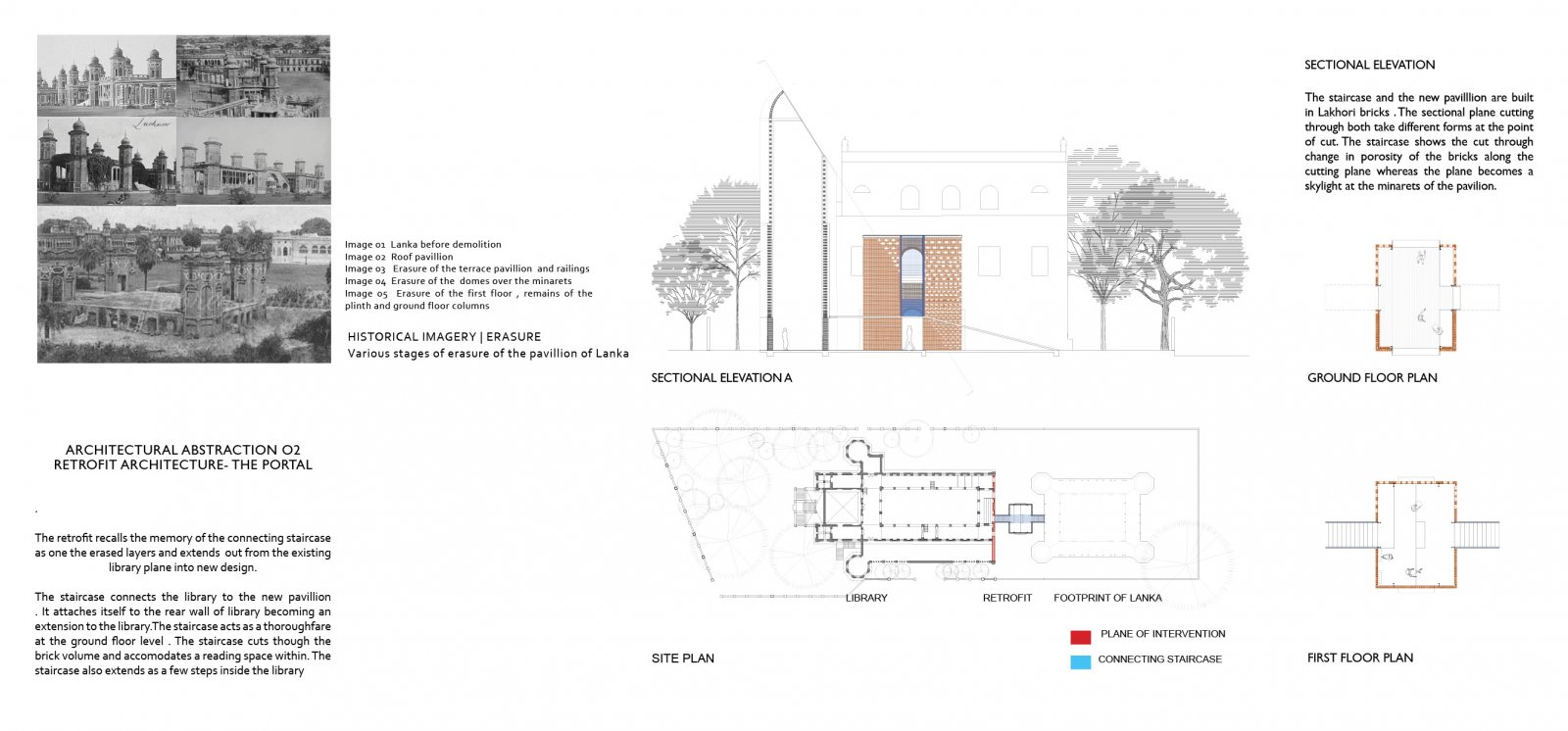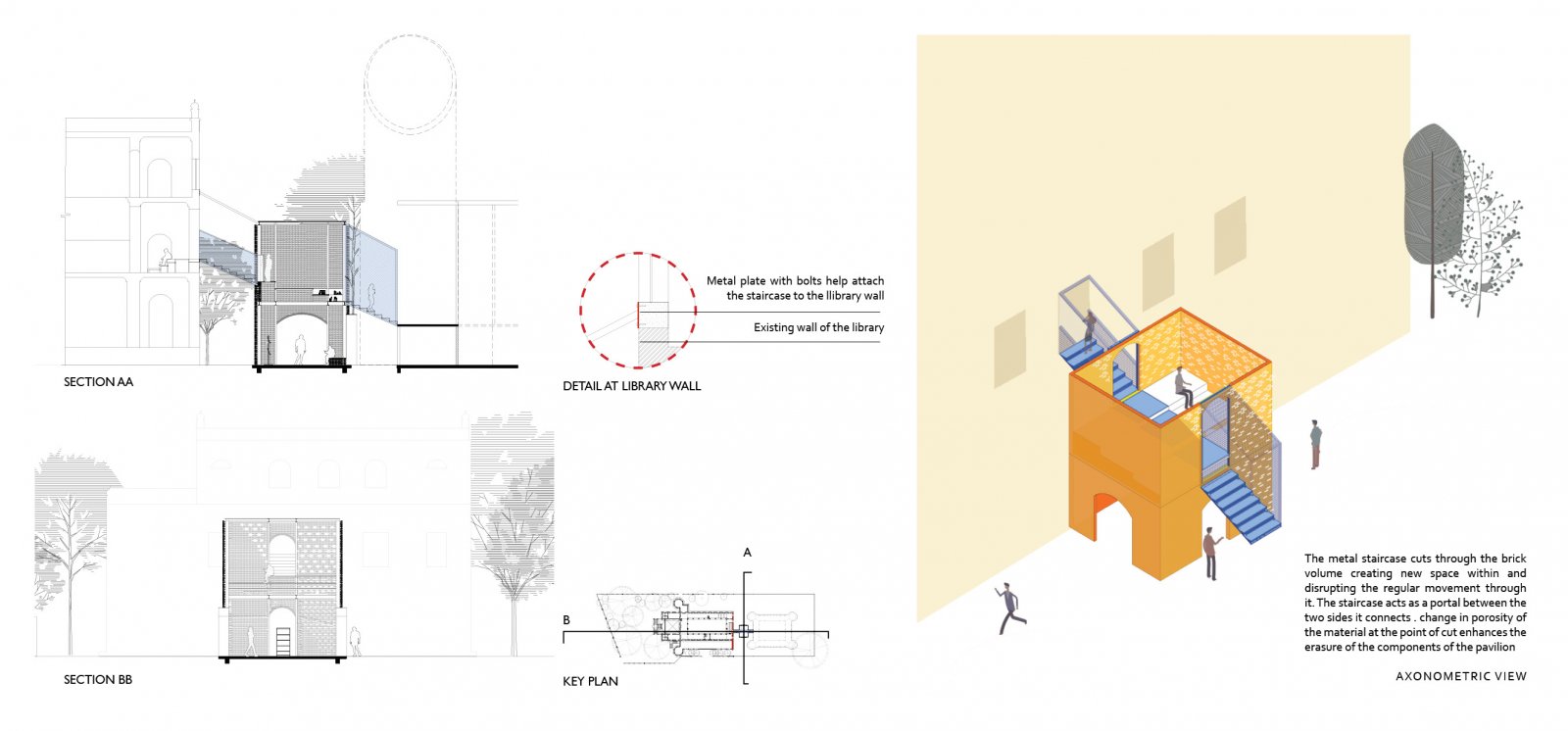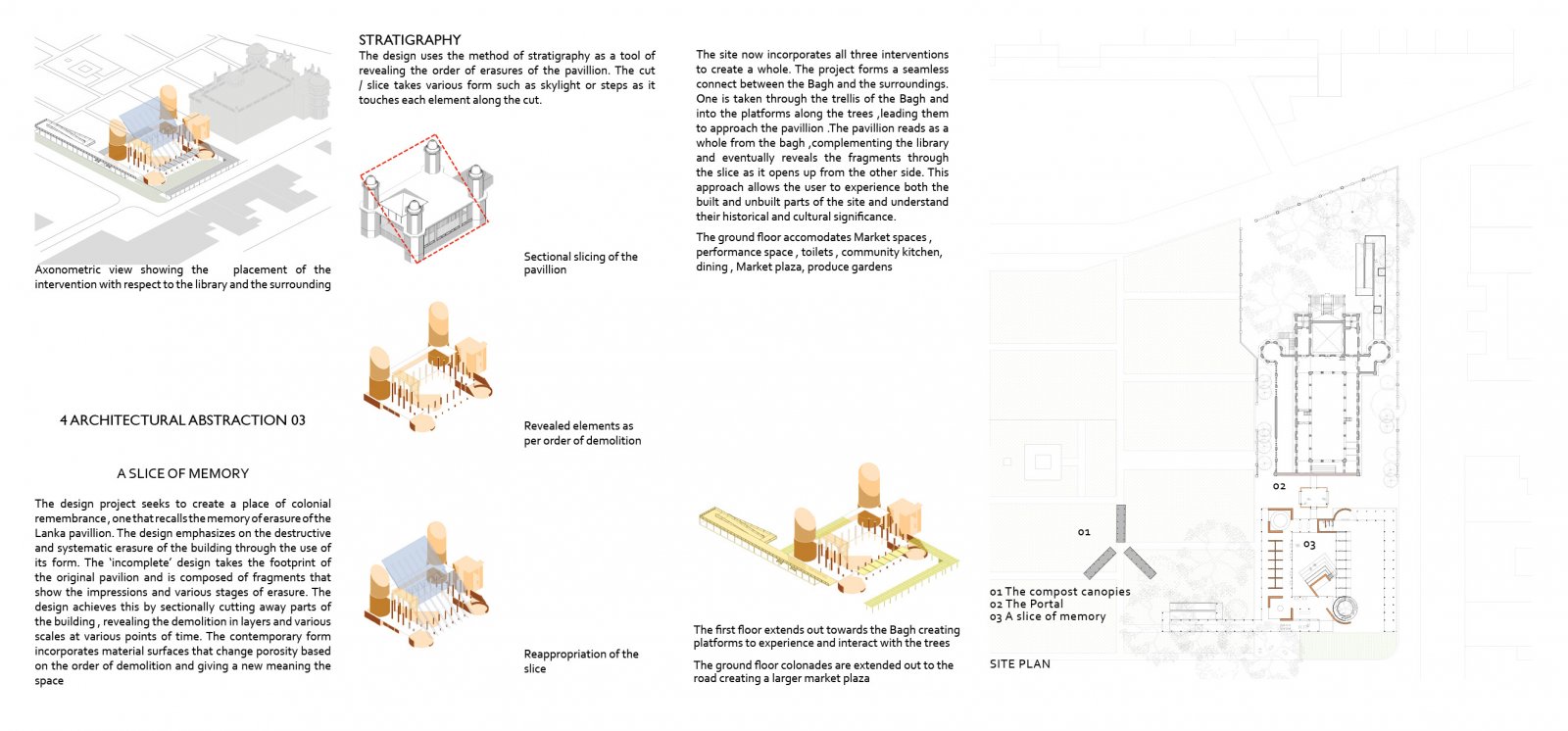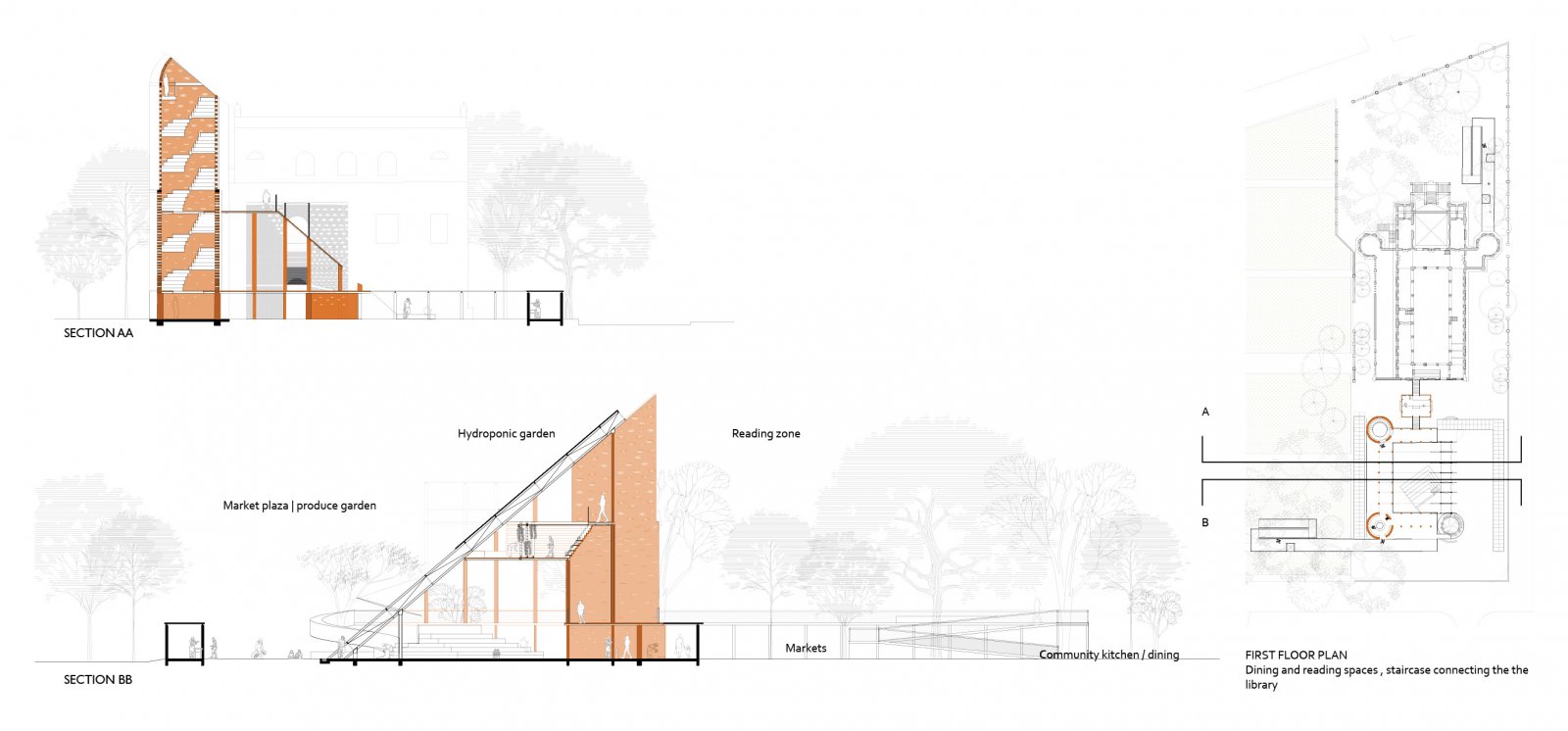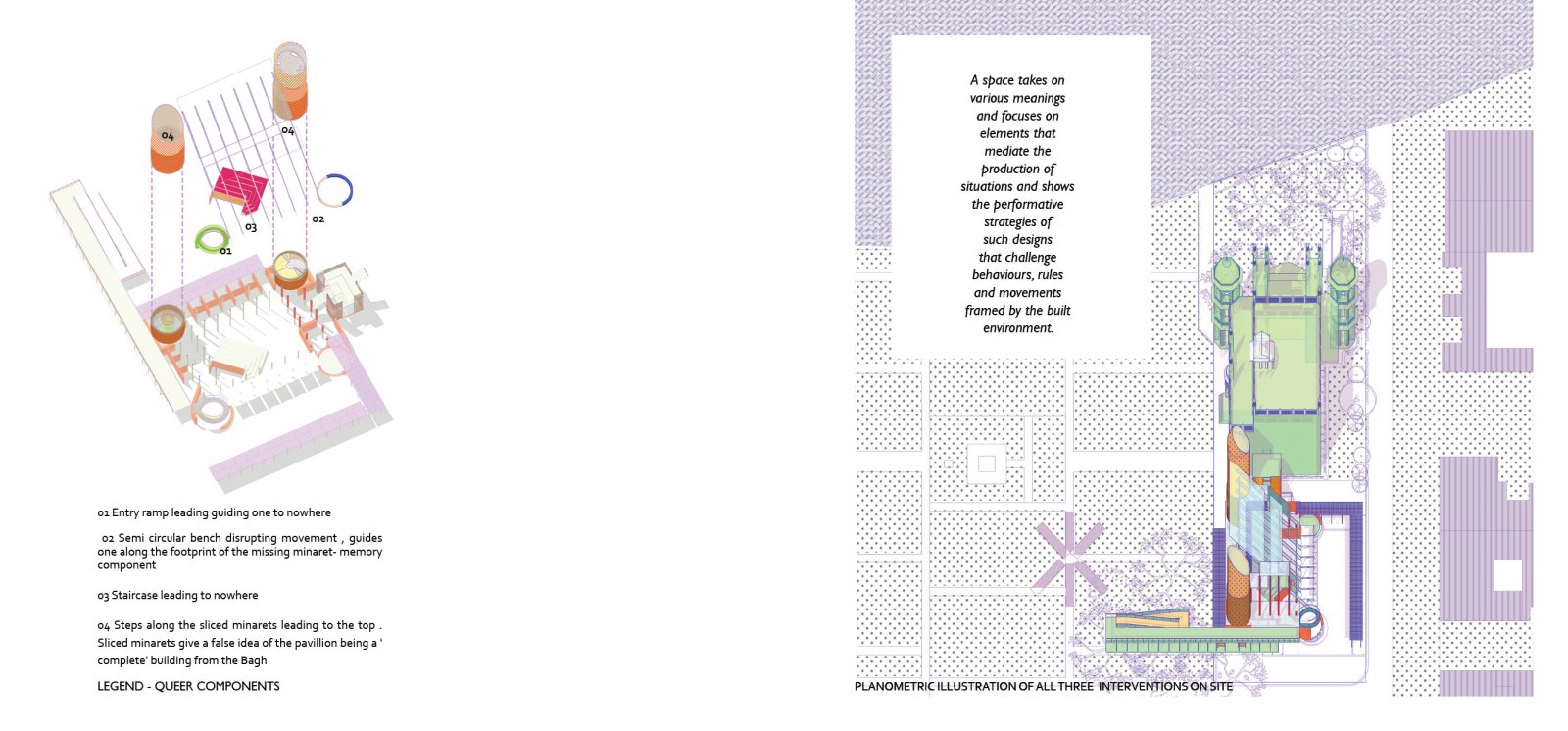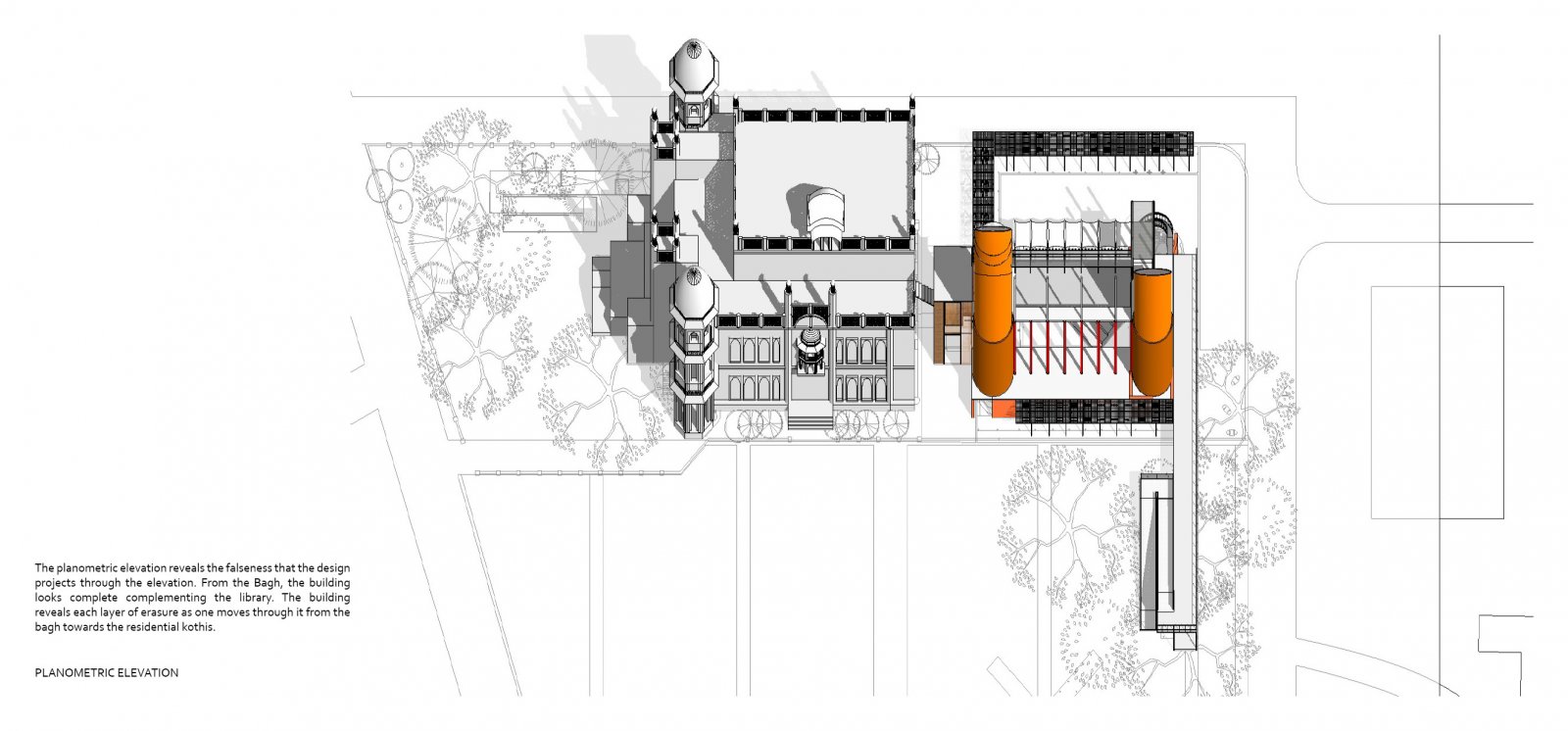- Student MEGHANA PADMANABHAN
- Code PAD21215
- Faculty Architecture
- Unit L4 Studio Unit
- Tutor/s Sonal Mithal
- TA Gazal Nanwani
The Kaiserbagh site in Lucknow has a rich history of queer compositions and typologies that date back to the 19th century. The garden pavilions, for example, were not just places of leisure, but also served as performance spaces and courts for political discussions. These pavilions were not just a physical representation of architectural experimentation, but also a testament to the cultural and social diversity of the people who used them. They defied normative movement, style, and composition. and provided a space for people of different backgrounds, genders, and identities to come together and engage in dialogue, art, and politics. By recognizing the historical significance of these queer compositions and typologies, the design manifesto draws inspiration from their innovative spirit and incorporates them into contemporary architectural form . A space that can take many different forms. The architecture of queerness is multiplied without being categorical, recognizing it as fluid, dynamic, and not fixed encompassing a wide range of experiences and perspectives.
